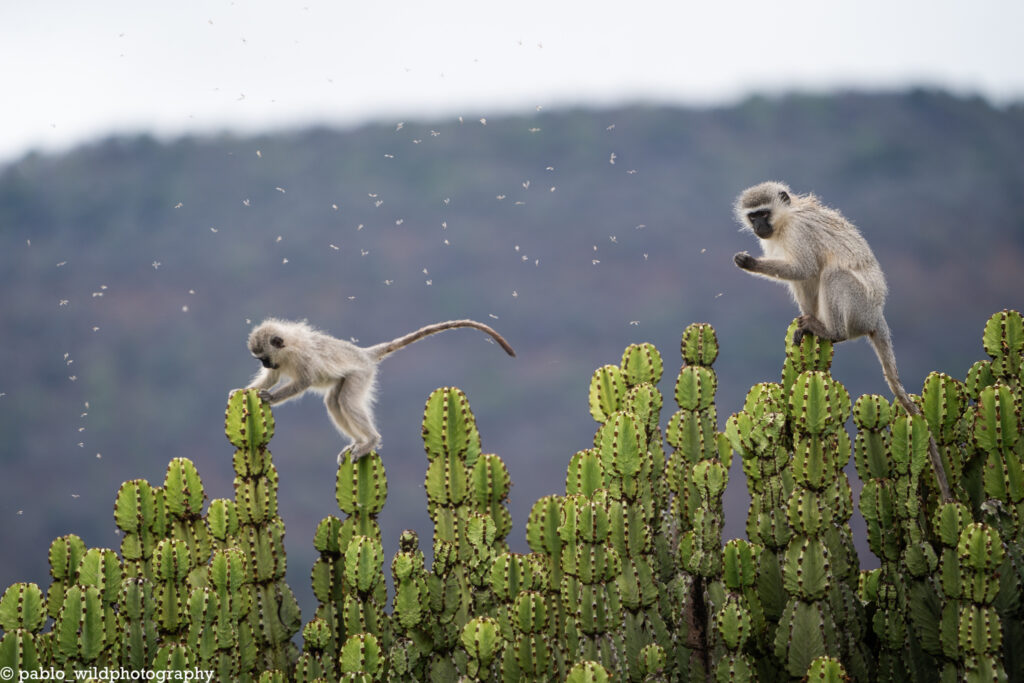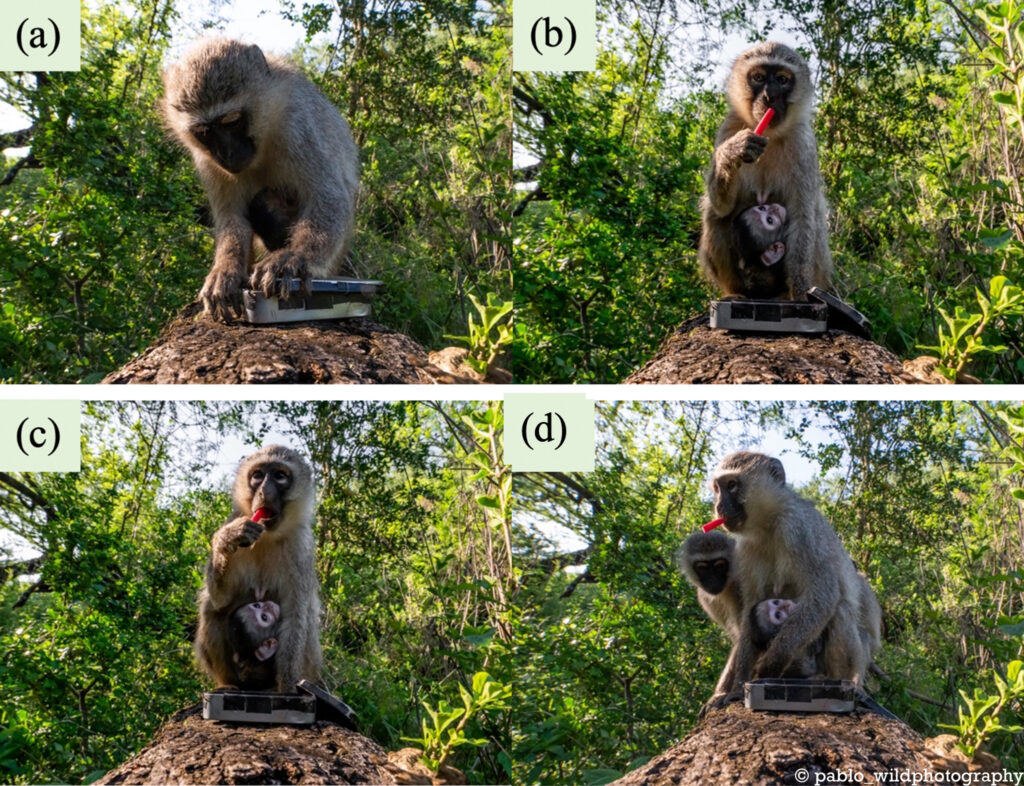Study area and Animals

This study took place at the iNkawu Vervet Project’s research area located in Mawana Game Reserve in KwaZulu Natal, South Africa.
Vervet monkeys (Chlorocebus pygerythrus) are a widespread species found throughout sub-Saharan Africa. They exhibit highly sophisticated social structures, typically living in large troops of up to 70+ individuals. Troops are organised around clear social hierarchies, intricate communication methods, and cooperative behaviours.
My study focused on a troop of wild, habituated Vervet Monkeys, known as “Baie Dankie” that featured 73 individuals during the study.
Saliva sampling
The set-up that I used to obtain samples consisted of a small metal box containing a salimetric swab, made of an absorbant polymer, that was dipped in marmalade and food colorant.
To obtain samples from various individuals, enabling each monkey to interact with the set-up while also collecting data on how the monkeys learnt from each other, I presented these boxes following a randomised list of every adults in the troop. I presented the boxes to the area where the target individual was found, enabling every monkey in the vicinity to come and interact with the set-up. Moreover, to avoid having individuals learning from me instead of from each other, I presented the box in a discrete way, by placing it ahead of the monkeys while they were not observing me.

Data collection and analysis
During the presentations, I collected data on the monkey interacting with the set-up, as well as the individuals that came to interact with this monkey. I also collected affiliative and agonistic data outside presentations to establish hierarchy and social proximity within the troops. Finally, I performed habituation tests to assess for individual variation regarding habituation towards humans, another important variable in my analysis.
I first established hierarchy in the troop using the Elo Rating method that uses agonistic interactions to create an Elo Score representing the rank of every monkey relatively to other individuals. I also generated a HabituationScore for every monkey based on the habituation tests I performed in the field that shows how habituated each individual is to human presence.
Who are the biters ?
On the saliva sampling part, I focused on assessing the impacts of different variables on sampling success. To do so, I computed linear regression models to understand if rank, age, sex or habituation level to human presence could predict the number of times an individual came to interact with the set-up.
Who are the demonstrators ?
Similarly, I used such models to understand if age, sex and rank could predict the number of times an individual was observed relatively to the number of times it interacted with the set-up. I did this to assess for any observational bias, as it had been demonstrated in other studies that used abundant and/or conspicuous food sources.
Analysis of networks
Finally, I generated two networks, one featuring how often individuals observed each other during my presentations, and a second one that consists of the social proximity between each individuals based on the affiliative interactions data. I then compared such networks using a Mantel’s test to see if both were statistically similar and thus if individual observed particularly monkeys with whom they share more affiliation.